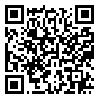Volume 35 -
J Dent Med-tums 2022, 35 - : 33-41 |
Back to browse issues page
Download citation:
BibTeX | RIS | EndNote | Medlars | ProCite | Reference Manager | RefWorks
Send citation to:



BibTeX | RIS | EndNote | Medlars | ProCite | Reference Manager | RefWorks
Send citation to:
Yusefi fakhr H, Soleimani Shayesteh Y, Khorsand A, Panjnoush M, Kharazi fard M J, Heidari M. Evaluation of the differences between implant stability and crestal bone resorption between osteotomy and conventional techniques. J Dent Med-tums 2022; 35 : 20
URL: http://jdm.tums.ac.ir/article-1-6127-en.html
URL: http://jdm.tums.ac.ir/article-1-6127-en.html
Hosnie Yusefi fakhr 
 , Yadollah Soleimani Shayesteh
, Yadollah Soleimani Shayesteh 
 , Afshin Khorsand1
, Afshin Khorsand1 
 , Mehrdad Panjnoush1
, Mehrdad Panjnoush1 
 , Mohammad javad Kharazi fard2
, Mohammad javad Kharazi fard2 
 , Mohadeseh Heidari *
, Mohadeseh Heidari * 
 3
3

 , Yadollah Soleimani Shayesteh
, Yadollah Soleimani Shayesteh 
 , Afshin Khorsand1
, Afshin Khorsand1 
 , Mehrdad Panjnoush1
, Mehrdad Panjnoush1 
 , Mohammad javad Kharazi fard2
, Mohammad javad Kharazi fard2 
 , Mohadeseh Heidari *
, Mohadeseh Heidari * 
 3
3
1- Tehran University of Medical Sciences
2- Epidemiologist, School of Dentistry, Tehran University of Medical Sciences, Tehran, Iran; Member of Dental Research Center, Dentistry Research Institute, Tehran University of Medical Sciences, Tehran, Iran
3- Assistant Professor, Dental Implant Research Center, Tehran University of Medical Sciences, Tehran, Iran
2- Epidemiologist, School of Dentistry, Tehran University of Medical Sciences, Tehran, Iran; Member of Dental Research Center, Dentistry Research Institute, Tehran University of Medical Sciences, Tehran, Iran
3- Assistant Professor, Dental Implant Research Center, Tehran University of Medical Sciences, Tehran, Iran
Abstract: (970 Views)
Background and Aims: According to the importance of primary stability on dental implant success and osseointegration, we intend to check and compare the stability and crestal bone loss rate between osteotomy technique and conventional implant insertion techniques.
Materials and Methods: In this study, 26 implants in anterior segment of maxilla in 13 patients were evaluated. The implants were TBR system (Toulouse, France) with 3.5 diameter and 10.5-12 mm length. The implant stability level was recorded immediately after surgery and 3 months later with Ostell mentor. The periapical radiography was taken immediately after surgery, 3 and 6 months to assess crestal bone resorption. Paired t-test and Wilcoxon signed Rank test used for data analysis.
Results: There were no statistically differences between the two treatments techniques in terms of stability (P>0.05). The mean crestal resorption was higher for the osteotomy technique 3 months after implant insertion (P<0.001) but there were no significant differences after 6 months (P=0.678).
Conclusion: Within the limitations of the current study, it can be concluded that the osteotomy it can be considered as a treatment technique in insufficient bone width.
Materials and Methods: In this study, 26 implants in anterior segment of maxilla in 13 patients were evaluated. The implants were TBR system (Toulouse, France) with 3.5 diameter and 10.5-12 mm length. The implant stability level was recorded immediately after surgery and 3 months later with Ostell mentor. The periapical radiography was taken immediately after surgery, 3 and 6 months to assess crestal bone resorption. Paired t-test and Wilcoxon signed Rank test used for data analysis.
Results: There were no statistically differences between the two treatments techniques in terms of stability (P>0.05). The mean crestal resorption was higher for the osteotomy technique 3 months after implant insertion (P<0.001) but there were no significant differences after 6 months (P=0.678).
Conclusion: Within the limitations of the current study, it can be concluded that the osteotomy it can be considered as a treatment technique in insufficient bone width.
Article number: 20
Type of Study: Research |
Subject:
Periodontology
Received: 2021/12/6 | Accepted: 2023/02/21 | Published: 2022/05/31
Received: 2021/12/6 | Accepted: 2023/02/21 | Published: 2022/05/31
Send email to the article author
| Rights and Permissions | |
 |
This work is licensed under a Creative Commons Attribution-NonCommercial 4.0 International License. |


